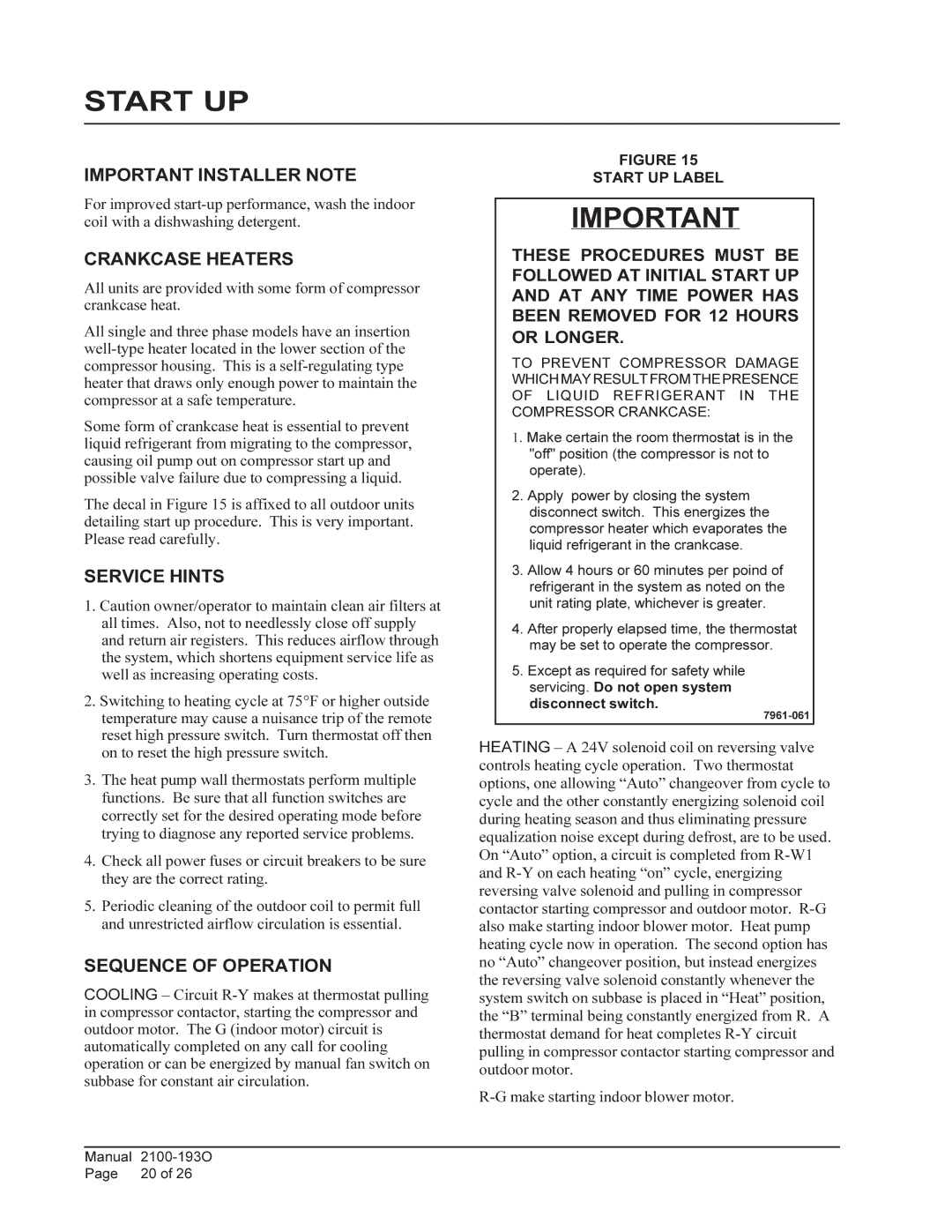
START UP
IMPORTANT INSTALLER NOTE
For improved
CRANKCASE HEATERS
All units are provided with some form of compressor crankcase heat.
All single and three phase models have an insertion
Some form of crankcase heat is essential to prevent liquid refrigerant from migrating to the compressor, causing oil pump out on compressor start up and possible valve failure due to compressing a liquid.
The decal in Figure 15 is affixed to all outdoor units detailing start up procedure. This is very important. Please read carefully.
SERVICE HINTS
1.Caution owner/operator to maintain clean air filters at all times. Also, not to needlessly close off supply and return air registers. This reduces airflow through the system, which shortens equipment service life as well as increasing operating costs.
2.Switching to heating cycle at 75°F or higher outside temperature may cause a nuisance trip of the remote reset high pressure switch. Turn thermostat off then on to reset the high pressure switch.
3.The heat pump wall thermostats perform multiple functions. Be sure that all function switches are correctly set for the desired operating mode before trying to diagnose any reported service problems.
4.Check all power fuses or circuit breakers to be sure they are the correct rating.
5.Periodic cleaning of the outdoor coil to permit full and unrestricted airflow circulation is essential.
SEQUENCE OF OPERATION
COOLING – Circuit
FIGURE 15
START UP LABEL
IMPORTANT
THESE PROCEDURES MUST BE FOLLOWED AT INITIAL START UP AND AT ANY TIME POWER HAS BEEN REMOVED FOR 12 HOURS OR LONGER.
TO PREVENT COMPRESSOR DAMAGE WHICHMAYRESULTFROMTHEPRESENCE OF LIQUID REFRIGERANT IN THE COMPRESSOR CRANKCASE:
1. Make certain the room thermostat is in the "off" position (the compressor is not to operate).
2.Apply power by closing the system disconnect switch. This energizes the compressor heater which evaporates the liquid refrigerant in the crankcase.
3.Allow 4 hours or 60 minutes per poind of refrigerant in the system as noted on the unit rating plate, whichever is greater.
4.After properly elapsed time, the thermostat may be set to operate the compressor.
5.Except as required for safety while servicing. Do not open system
disconnect switch.
HEATING – A 24V solenoid coil on reversing valve controls heating cycle operation. Two thermostat options, one allowing “Auto” changeover from cycle to cycle and the other constantly energizing solenoid coil during heating season and thus eliminating pressure equalization noise except during defrost, are to be used. On “Auto” option, a circuit is completed from
Manual | |
Page | 20 of 26 |
